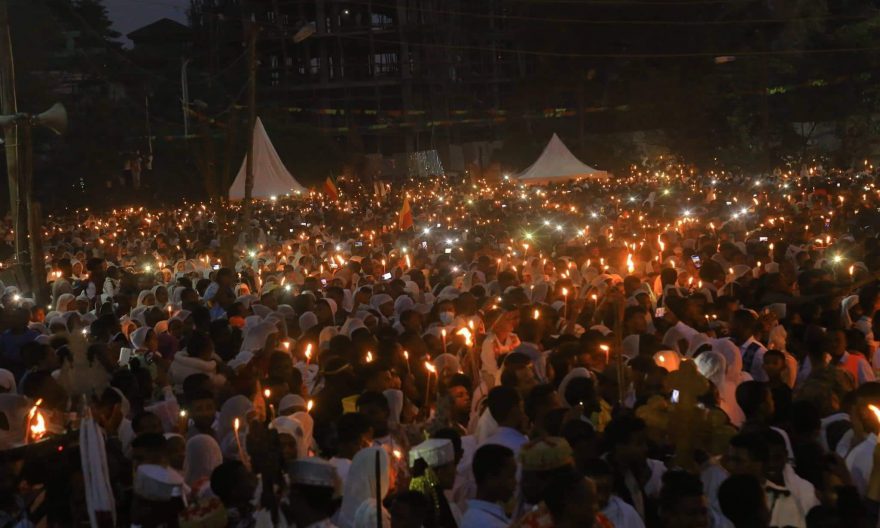
BY MULUGETA GUDETA
This year’s World Tourism Day is observed with an interesting idea. On September 2022, the 42nd edition of World Tourism Day was celebrated around the world. The official celebration will be held in Bali, Indonesia, with the theme of ‘Rethinking Tourism’. The focus will be on reviewing the growth of the tourism sector, rethinking and redeveloping tourism after the COVID-19 pandemic.
The term “rethinking” is important here. It means thinking anew but in a creative and different way. However in order to rethink tourism in Ethiopia, we need to identify some of the major challenges it has been facing and is still facing.
Tourism development, like any activity, obviously needs to change with changing times and circumstances. That is why Ethiopian tourism nowadays is different from what it used to be at the time of its launching many decades back. However, what is incontestable is the fact that tourism in our country has attained a level of growth that may be called fast and highly promising despite the many predictable and unpredictable challenges. Despite these hurdles, the sector could register phenomenal growth as late as 2018.
Available data indicate that as early as 2018 Ethiopia’s Travel and Tourism economy grew by 48.6% in 2018 – the largest of any country in the world – according to the World Travel and Tourism Council›s (WTTC) annual review of the economic impact and social importance of the sector.
Compared to where tourism stood as a fast growing economic activity in 1955, present trends clearly corroborate the thesis that this ‘smokeless’ industry is not only smokeless but was on a fiery growth trajectory for more than 20 years. “In 1995, tourism revenues amounted to 177.00 million USD, or about 2.3 percent of the gross national product. This corresponded to about 103,000 tourists at that time and roughly 1,718 USD per person. Within 25 years, the country’s dependence on tourism has increased noticeably.
Before the outbreak of the Covid-19 pandemic, sales took up $3.53 billion, 3.7 percent of gross national product. Thus, each visitor spent an average of $4,346 on their vacation in Ethiopia.” Average incomes from foreign trade rarely surpassed the 3 billion dollar figure in the last many years. This is to say that average incomes from tourism alone is nearly equal or surpass incomes from foreign trade and this is quite remarkable.
Another remarkable fact is that growth in tourism as a burgeoning sector occurred in the context of a poorly developed tourism infrastructure and investment to begin with. The rational factor constraining Ethiopian tourism were, “Shortage of tourist facilities, lack of skillful human resources, weak promotion, lack of integration and political will are the major negatively contributing forces.” Moreover, these challenges were compounded by additional challenges. “Studies conducted in this regard have identified many challenges, including lack of effective marketing strategies, lack of human resource and capacity, weak institutional and legislative frameworks, industry quality and standards issues, insufficient tourism and support infrastructure, and uncoordinated/fragmented approaches to tourism development.”
Top challenges confronting tourism are also indicated as being taxation, travel marketing, infrastructure issues, and security and cross border regulations. Too many tourism destinations are not prepared for visitors. Tourists or travelers can at times deem travel marketing to be exaggerated. “Among these factors culture, peace, security, developed infrastructure of the world, visa facilities, natural beautification, attitude of the people, tourist number, Quarantine, World population, Education, Income level, Price level of different commodities in the world, different languages and fare of hotel etc. are of great importance.”
We should nevertheless put these challenges in the context of the factors and actors that impede the growth of the sector at the African level. “Among these factors culture, peace, security, developed infrastructure of the world, visa facilities, natural beautification, attitude of the people, tourist number, Quarantine, World population, Education, Income level, Price level of different commodities in the world, different languages and fare of hotel…”
While the hurdles are apparently overwhelming, what has been done to overcome them at the official government level as well as by actors in the private sector leaves much to be desired. There is a similarity in official approaches to, say coffee development and export and the management of the tourism sector in Ethiopia. Coffee is Ethiopia’s major export to the world and the biggest source of foreign currency earning.
Yet, the full potentials of coffee development have remained unexploited. Countries like Vietnam that have started coffee cultivation and export very lately have outshined us in this regard and have become the top major exporting countries while we have done little progress despite our vast potentials. What is worse still is the fact the authorities dealing with coffee development and export seem to be satisfied with the volume of annual foreign currency incomes. A case in point is that as early as this year, the coffee authorities were so happy with aggregate income from the sector that they tweeted to share their happiness with the public by saying that we have earned billion dollars.
This is impressive indeed but it does not tell the whole story. We are satisfied with growth figures because we did not aim high enough and the results are beyond our expectations. Why not aim at 20 or more billion dollars of income from coffee export every year? The sky may be the limit for growth in the sector but our vision is not as big as the prospects.
The same can be said about the tourism sector which is vast, diversified and unexploited. Tourism development may not be comparatively as easy as coffee development and export where much of the work is done by nature and we add little to process the end product. In tourism development, much of the work is done by human factors while nature also plays a determining factor by providing the climate, terrain, history and culture that tourists come to visit and pay for that. Tourism development requires not only a huge amount of financial resources for its development. What tourism has and coffee development does not have may be the possibility of registering higher results through creative thinking and smart action.
Sticking to the traditional ways of tourism promotion does not take as a long distance and yet we seem to be happy with what we have achieved in the sector. It may be legitimate to be happy with the tourism sector when we are old that “Ethiopia’s Travel and Tourism economy grew by 48.6% in 2018 – the largest of any country in the world…” What we should however bear in mind is that the potentials in the sector are limitless and that we should always think harder to make the sector better. What does it mean to be smart and creative in promoting the tourism sector? Once, the challenges are identified as we have indicated above, what is required is creative thinking in overcoming them and in generating new and fresh ideas to implement new approaches.
This year’s celebrations of Tourism Day take post-COVID as a point of departure. The pandemic was disastrous for tourism for reasons we are familiar with by now. COVID has now abetted although not fully defeated. In Ethiopia the pandemic has robbed many people with their livelihoods by reducing the flow of tourists in the historic towns like Lalibela, to take only one example among many, to a drop of the pre-COVID days. Life had become as miserable as the town lost its incomes and economic activities were nearly reduced to naught.
Then followed the conflict in the north of our country when TPLF brutal marauders destroyed and ransacked the town forcing many to flee and totally stopping the flow of tourists although COVID was not a threat as it used to be a couple of years back. The bad international media image painted about Ethiopia in general and the northern region in particular added salt to the wounds of tourism in Lalibela. And now the tourism authorities are called on to think about tourism in a new and creative way. This may mean that to resell the town’s tourism potentials in a new way. In other words, the tourism authorities in Amhara region need to launch a very aggressive, creative and truthful campaign to beat the disinformation campaign the Western is involved to paint a dark picture of the region.
Rethinking tourism may mean many things but it can be briefly summarized as a concerted effort to do away with the damages done to the sector in the last couple of years in particular. This should not however be taken as another occasion to brandish slogans and do nothing on the ground. What we need now is a real, creative approach or an effort to think outside the traditional box and establish new parameters for practical action. This is of course easy to say and tough to do. This is only something that can be achieved with higher levels of commitment, coordinated and sustainable efforts and allocation of resources as well as being ambitious to produce real and tangible results and not be satisfied with modest growth figures.
THE ETHIOPIAN HERALD WEDNESDAY 28 SEPTEMBER 2022

